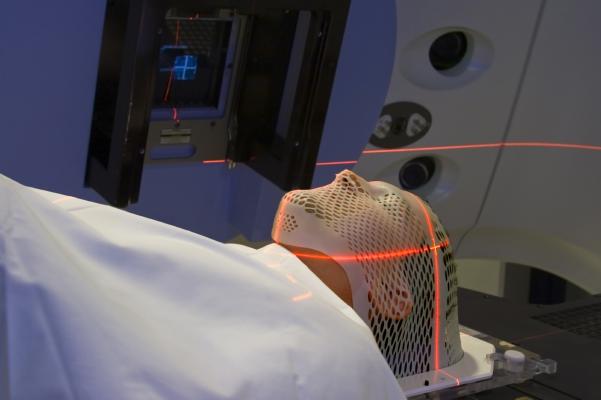
December 9, 2019 — Most people diagnosed with the most common type of non-Hodgkin's lymphoma can safely skip radiation treatment after a clear positron emission tomography (PET) scan, according to new clinical trial results released today at the 61st American Society of Hematology (ASH) Annual Meeting.
The results are expected to change the standard of cancer care for early stage, or limited, diffuse large B-cell lymphoma (DLBCL), a fast-spreading cancer that is the most common subtype of non-Hodgkin's lymphoma in the United States, with more than 20,000 people diagnosed each year. Findings from the study, run by the SWOG Cancer Research Network, a cancer clinical trials network funded by the National Cancer Institute, part of the National Institutes of Health, were presented at a special session in Orlando at the ASH Annual Meeting, the world's largest conference devoted to blood diseases and blood cancers like lymphoma.
Daniel Persky, M.D., an associate professor at the University of Arizona Cancer Center and the lead investigator of the SWOG study, said the research results are good news for patients.
"Radiation treatment, like all cancer treatments, has side effects," Persky said. "It can be painful and cause rashes or burns, as well as fatigue. It can also increase patients' risk of developing other cancers. If we can spare people the pain - and time and cost - of radiation and give a simpler course of treatment, it's a win."
For more than 20 years, SWOG researchers have pioneered treatment for people with non-Hodgkin's lymphoma. In 1998, SWOG researcher Thomas P. Miller, M.D., published findings in The New England Journal of Medicine that showed the addition of radiation therapy to the standard chemotherapy regimen of cyclophosphamide, doxorubicin, vincristine and prednisone (CHOP) is superior to eight cycles of a CHOP chemotherapy combination alone for people with limited stage, aggressive non-Hodgkin's lymphoma. This work changed how doctors treat patients. Since then, SWOG and other researchers have successfully added the monoclonal antibody rituximab to the treatment regimen (R-CHOP), but the general concept of a chemotherapy and radiation combination treatment for limited stage DLBCL has not changed — until now.
Persky and colleagues wanted to see if the use of a positron emission tomography (PET) scan could positively impact care for people with DLBCL in the early stages, the time in cancer development when treatment is most effective. PET scans use glucose labeled with a radioactive tracer, which collects in fast-growing tissues, like cancers, that consume sugar at high rates.
Persky and his team enrolled 132 eligible patients with stage I and II DLBCL for the trial, making it the largest U.S. study of this cancer subtype since the original SWOG study in 1998. There was no age limit for enrollment, so patients skewed older, with a median age of 62. Everyone received standard R-CHOP therapy, then got a PET scan after their third cycle of treatment. Scans were reviewed by the same group of radiologists in real time.
Patients with a negative PET scan got one additional cycle of R-CHOP to complete their treatment, for a total of four rounds of chemotherapy. Patients with a positive scan underwent involved-field radiation therapy (IFRT) to their affected lymph nodes, and a booster treatment in areas where the scans showed fast-growing cancer cells. Three to six weeks later, these patients received treatment with ibritumomab tiuxetan, a radio-immunotherapy drug approved for a different lymphoma type, which couples a rituximab-like monoclonal antibody to a radioactive particle. Twelve weeks after treatment completion, every patient had a final PET scan.
Patients were then followed for an average of about five years after treatment. During this follow-up period, 11 patients died, but only two died from lymphoma. Five patients saw their cancer return. Of those five, three had received the experimental treatment of only four rounds of R-CHOP. One patient had a positive PET scan but declined radiation. The other went off treatment altogether after one round of chemotherapy.
For survivors of both treatment groups, outcomes were excellent. Results showed that 91 percent of people who received no radiation were alive five years after treatment, and 89 percent were cancer-free. For patients who did receive radiation, 93 percent were alive five years after treatment, and 86 percent were cancer-free.
With 89 percent of patients in remission after just four rounds of chemotherapy, Persky believes PET-directed therapy will be the new standard of care for limited DLBCL, particularly when coupled with German results presented at last year's ASH annual meeting. They showed that a subgroup of younger patients respond well to four, rather than six, cycles of R-CHOP along with two cycles of rituximab monotherapy.
"In both studies, we find that many patients can forgo radiation and get less chemo — and still get excellent results," Persky said. "This means people can heal from treatment sooner, and that care costs can go down. I think doctors and patients can agree: The less cancer treatment, the better."
For more information: www.nih.gov
Related content:
PET/CT Bests Gold Standard Bone Marrow Biopsy for Diagnosis and Prognosis of Lymphoma Patients
Red Journal Examines Vital Role of Radiation Therapy in Modern Lymphoma Treatment


 April 18, 2024
April 18, 2024 








